Use these 6 types of organic nitrogen fertilizer to meet your garden’s needs while safeguarding your soil-life balance.
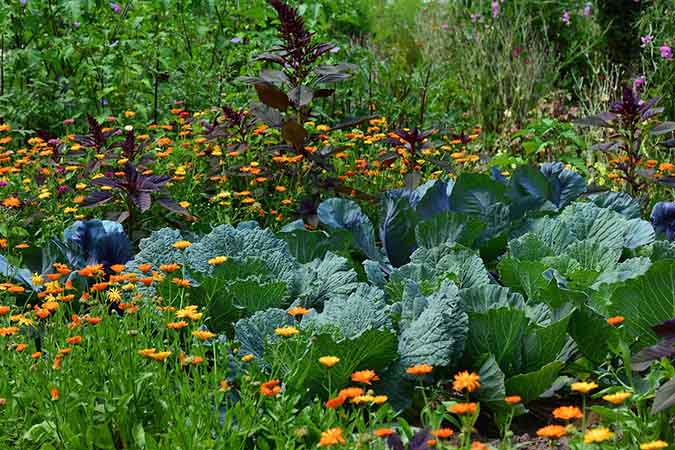
Image by congerdesign from Pixabay
Organic Nitrogen Fertilizer: 6 Secrets to Soil Health
Welcome to the Organic Growers’ Tool Kit blog series! In this post, we’ll be talking about Organic Growers’ Tool #4: natural nitrogen fertilizers for gardens.
In this case, we’re referring to organic nitrogen fertilizers that won’t upset your soil-life balance any more than necessary.
Read the Other Articles in the Series Here: The Organic Growers’ Tool Kit
If you are just tuning in to the series, you’ve missed a bunch of important stuff:
- We’ve become citizens of the incredible ecosystem that is soil and discovered the importance of lots of organic matter when we’re growing food at home.
- We’ve used a simple mason jar test to determine whether soil is suitable for growing food or if significant improvement is required before planting.
- We’ve determined soil pH and identified nitrogen, phosphorous, and potassium (N-P-K) needs using an at-home soil test kit.
Fertilizer as a Multivitamin for Your Growing Garden
That background is important because the information I am about to share is not about using fertilizer on a regular basis. This is about using fertilizer like a short-term multivitamin to help your garden grow now.
This deliberate approach to natural nitrogen fertilizers acts as an aid while you build good soil by adding organic matter on a regular basis. It’s important to understand the role of nutrients and manage your inputs with respect for the current state of your soil.
Learn more about the role of N-P-K in plant development here: “Special Challenges to Managing N-P-K in the Organic Garden.”
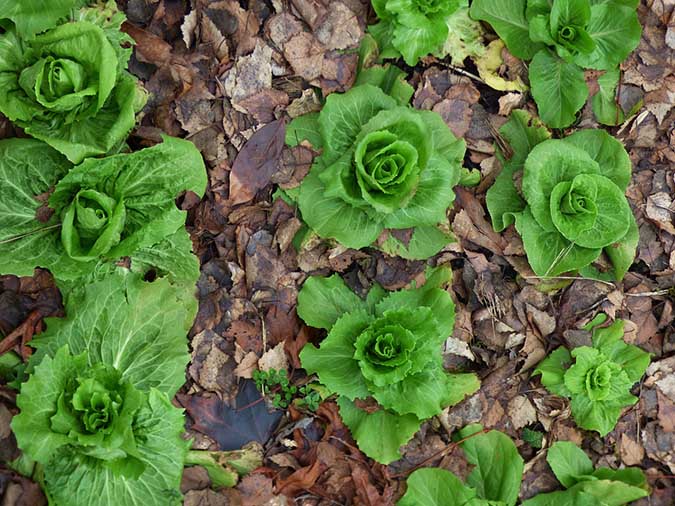
Image by Eric Michelat from Pixabay
We all have different types of soil, ways of adding organic matter, and environmental conditions. This makes it impossible for me to tell you exactly how to make your garden grow well.
I can simply give you some baseline ideas that will get you close to your plant needs and keep your soil from being overloaded with nitrogen in the meantime.
Strategy #1: Go Slowly and Start Small on Organic Nitrogen Fertilizer
Nitrogen is the most volatile of the three macronutrients. Even something like lightning or a little acid rain can increase the nitrogen in your soil.
Your soil test will likely suggest that you use immediately available forms of nitrogen, like nitrate of soda or blood meal. Instead, I’d like you to consider slow-release natural nitrogen fertilizer options. These include feather meal, worm castings, and poultry manure.
You May Also Enjoy:
“Homemade Fertilizers—15 Simple and Inexpensive Options”
“How to Improve Your Terrible Soil”
“Sheet Mulching: Build Soil, Thwart Weeds, and Make Your Garden Fertile”
Such nitrogen-heavy fertilizers are more expensive than mined nitrogen like nitrate of soda.
If you are applying 3-4 inches of organic matter as previously prescribed, then I recommend you only add half of the amount called for in your soil test to start. That may help make them more affordable.
Organic Nitrogen Fertilizer #1: Feather Meal (12-0-0)
Feather meal is not an innocuous amendment. It’s made from hydrolyzed feathers that come by way of industrial poultry. Feathers are mostly protein, though, which is why they make a good nitrogen source when processed.
Feathers can bioaccumulate the bad stuff. A 2012 test of organic feather meal showed evidence that antibiotics banned in 2005 were still present in recently processed poultry. The tests also found inorganic arsenic—used as a fattening agent until as late as 2015—in feather meal.1)https://www.ncbi.nlm.nih.gov/pubmed/22244353
Frankly, there will be risks in just about everything you can buy to put on your garden—organic or not. That’s why it’s my hope that you’ll only need to use these organic nitrogen fertilizers for the first few years of growing (max).
You May Also Enjoy:
“The #1 Way to Measure Soil Moisture”
“Make Peace With Your Poop (and Then Make Compost With It!)”
“5 Inexpensive, Simple Solutions For Small-Space Composting”
The benefit of feather meal as an organic nitrogen fertilizer is that it contains 12 percent nitrogen per pound of product (the rest is inert matter). That makes it one of the more affordable ways to buy organic nitrogen.
Additionally, it’s a slow-release nitrogen source that is unlocked through the same biological processes that decompose other organic matter in your soil. This makes it safer for just-developing soils than something like organic nitrate of soda.
Organic Nitrogen Fertilizer #2: Worm Castings (1-0-0)
Worm castings are another great source of organic nitrogen fertilizer. Homemade supplies often contain small amounts of phosphorous and potassium too. So this may not be a pure nitrogen source like feather meal would be.
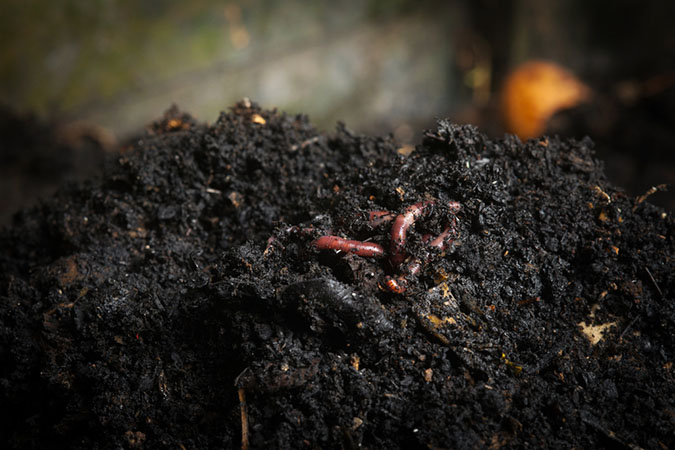
Commercially produced worm castings usually contain 1 percent of nitrogen per pound of product. That means you need 12 times more worm castings than feather meal to get the same amount of nitrogen. As you can imagine, they can get pretty expensive to buy.
You May Also Enjoy:
“Simple & Effective Worm Composting (VIDEO)”
Worm castings are a great slow-release form of nitrogen, plus they load your soil with good bacteria and increase water-holding capacity.
If you can afford it or produce enough at home, this would be my first choice as a nitrogen amendment. However, even I use feather meal sometimes. (And I produce 20-40 gallons of worm castings a month during the growing season.)
Organic Nitrogen Fertilizer #3: Poultry Manure (3-2-?)
Poultry manure is another great source of organic nitrogen fertilizer. Store-bought chicken manure has been aged sufficiently so that unstable, fast-acting nitrogen that can burn plants has already leached out. That’s why most of the poultry manure fertilizers you buy will only offer between 2-3 percent of nitrogen per pound of product.
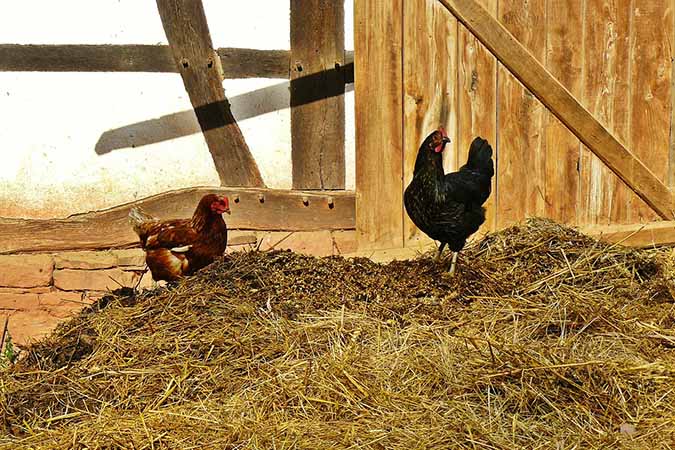
Image by Anja🤗#helpinghands #solidarity#stays healthy🙏 from Pixabay
Poultry manure also contains phosphorous and potassium. The phosphorous in poultry manure is a slow-release, stable form. The potassium in poultry manure is mostly water soluble and disperses quickly.
You May Also Enjoy:
“Do You Use the ‘World’s Best Fertilizer’?”
“35+ Powerful, Inexpensive Organic Fertilizers You Can DIY”
“Homemade Liquid Fertilizer: The Easy Way to Feed a Large Garden”
After 10-12 weeks of aging, poultry manure tends to have an N-P-K analysis of 3-2-3 percent per pound. However, for the purposes of fertilizing your garden, you can consider the K analysis as short-term and negligible (i.e., only lasts for the first few waterings). The N-P can be counted toward amending your soil based on your soil test.
If you are planning to use manure from your own poultry, note that if you use litter, your N-P-K values per pound will likely be lower than if you only collect manure and feathers to age and use as fertilizer.
Strategy #2: Add Fast-Acting Nitrogen Only As Needed
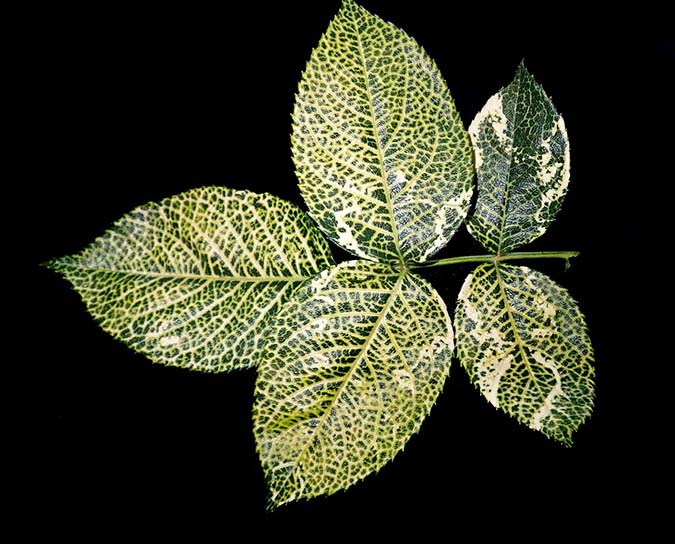
Image by Beverly Buckley from Pixabay
Now, using half the nitrogen you need plus organic matter still may not get you all the nitrogen your plants need to flourish. So you may want to make some adjustments during the growing season.
Luckily, it’s really easy to identify nitrogen shortage in your plants. Nitrogen-deficient leaves show yellowing between the veins.
Foliar Spray Organic Nitrogen Fertilizers
At the slightest signs of yellowing, you can spray the undersides of your leaves with compost tea, hydrolyzed fish liquid, or fish emulsion fertilizer. This method is called foliar feeding and it’s like giving your plants a nitrogen IV.
Organic Nitrogen Fertilizer #4: Compost Tea
Compost tea can be made from compost, worm castings, or even fast-acting nitrogen sources.
You May Also Enjoy:
“Compost Tea: An Easy Way to Stretch Your Compost”
“Aerobic Compost Tea, Worm Tea, and Leachate—A Clarification”
“Extreme Composting: Say Goodbye to Landfills and Hello to Soil Fertility”
Organic Nitrogen Fertilizer #5: Hydrolyzed Fish or Fish Emulsion
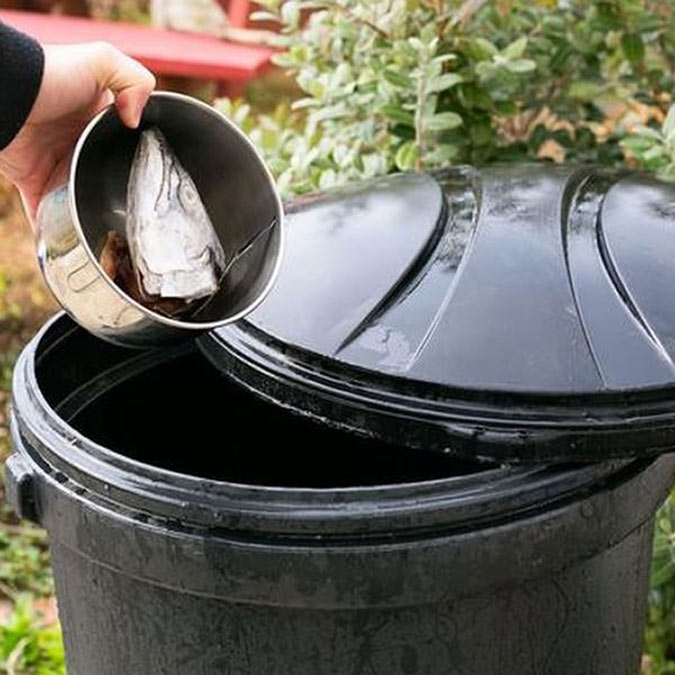
Liquid organic nitrogen fertilizers made from fish parts make a great foliar spray. Different manufacturers create their fish sprays different ways, but all are by-products of industrial fishing. Waste parts that would otherwise go to the landfill are transformed into liquid fertilizer through hydrolyzing or emulsion.
You May Also Enjoy:
“How to Make Fish Emulsion Fertilizer”
“A Simple Fertilizer From the Greek Gods”
“Jump-Start Your Compost With These 5 Free, DIY Compost Activators”
If you can afford hydrolyzed fish fertilizer, that’s my preferred product. But fish emulsion can also fill your nitrogen gap and is pretty easy to make at home if you happen to fish.
Frequency of Foliar Spraying
Many product retailers suggest foliar fertilization every two weeks. However, since you have lots of organic matter in your soil and you probably applied worm castings, poultry manure, or feather meal, you may not need to foliar spray when that good stuff kicks in.
Check your plant leaves about once a week to determine if they need another round of foliar spraying. Only spray again as necessary.
Organic Nitrogen Fertilizer #6: Blood Meal
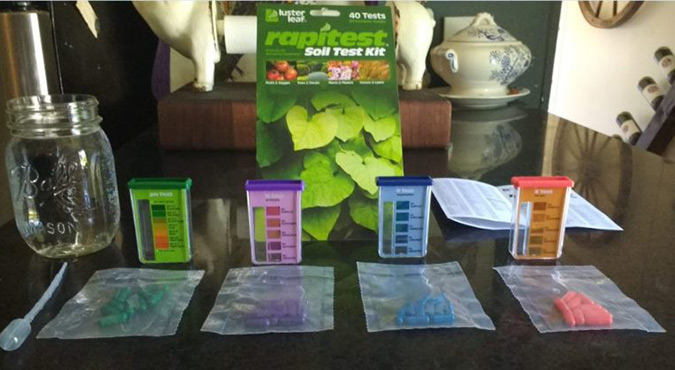
If foliar feeding isn’t a workable solution for you, then you may need to apply blood meal. In that case, do a soil test again when you notice the nitrogen shortage in your leaves to determine how much to add.
Add only half of what those tests results show. If necessary, you can apply more later.
You May Also Enjoy:
“At-Home Soil Test Kits: How to Use Them . . . And Why You Should”
When applying fast-acting nitrogen, try not to do it prior to expected periods of heavy rain to avoid issues with runoff. Also, fast-acting nitrogen is going to upset your soil-life balance. So I personally consider it a last resort.
In the next article, we take a closer look at ways to manage the phosphorous and potassium in your organic garden.
Read the Other Articles in the Series Here: The Organic Growers’ Tool Kit
What Do You Think?
What experiences have you had with nitrogen management in your garden? What’s your favorite organic nitrogen fertilizer? Please share your tips, tricks, or challenges with our community!
________________
This is an updated version of an article that was originally published on March 27, 2019. The author may not currently be available to respond to comments; however, we encourage our Community members to chime in to share their experiences and answer questions!
The Grow Network is a participant in the Amazon Services LLC Associates Program, an affiliate program designed to provide a means for our team to earn fees for recommending our favorite products! We may earn a small commission, at no additional cost to you, should you purchase an item after clicking one of our links. Thanks for supporting TGN!

Tasha Greer is a regular contributor to The Grow Network and has cowritten several e-books with Marjory Wildcraft. The author of “Grow Your Own Spices” (December 2020), she also blogs for MorningChores.com and Mother Earth News. For more tips on homesteading and herb and spice gardening, follow Tasha at Simplestead.com.
References
| ↑1 | https://www.ncbi.nlm.nih.gov/pubmed/22244353 |
|---|
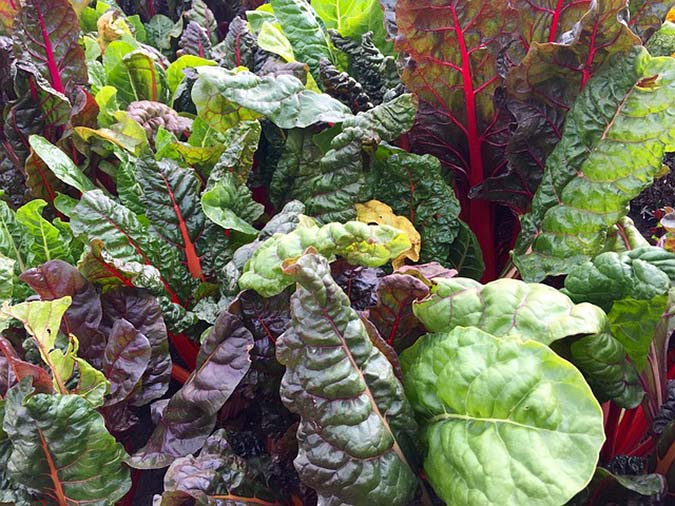
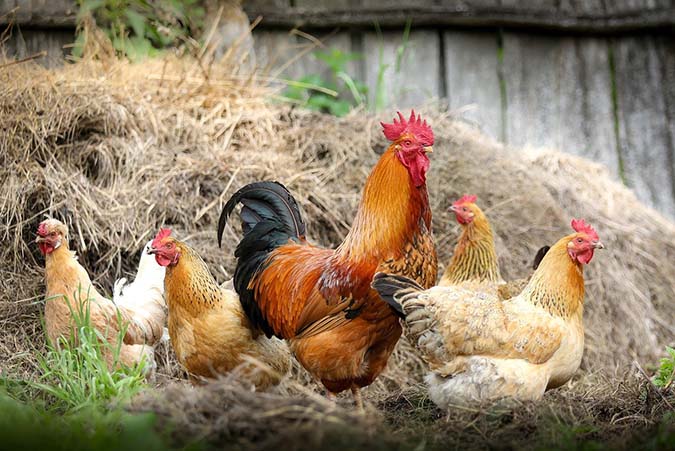







COMMENTS(5)
Great article. I also jede bone and horn meal or a combination. You can also use legumen as green manure.
Hey Jens,
I’ve heard that hoof and horn meal is a good nitrogen amendment. I think it’s also 12%. But I’ve never been able to find it it in my area. I totally agree on the legumes as green manure. I use hairy vetch in my perennial spaces and crimson clover in my garden beds. Thanks for reading!
Tasha
Thanks, Tasha. Soil health and fertility is something I’m very interested in. …and something I really need to improve on.
Hey Scott,
Soil fertility can be tricky at first. Once you discover how much easier it is to grow veggies fertile soil, though, it becomes easier to prioritize. I do a lot of work preparing my beds, then very little work maintaining them.
Thanks for reading!
Tasha
I have about 1200 square feet of terraces and hugelkultures developed for gardening on my city lot. For the past four years I’ve practiced something that actually came to me while meditating in my garden one day. In the autumn, after all the garden plants have given up, I pile 4-8 inches of leaves, straw and wood chips over the entire surface of the garden space. Then, from November to April I collect and pour my own urine over this layer. From time to time I also spray water on it. By April, here at 4500 feet altitude in Montana, the layer of material is only about 2 inches deep and the beds are ready to plant. I think the soil is even heated up for earlier planting by this. I’ve played around with blood meal, horse manure and a number of different Nitrogen “spikes” to fuel and modulate the in-place composting. But I’m gradually settling on mostly just my own golden stuff. Seems to act fast enough but is still more mellow than other sources I’ve tried. I feel that it creates a more personal “circuit” between myself and my soil and plants too.